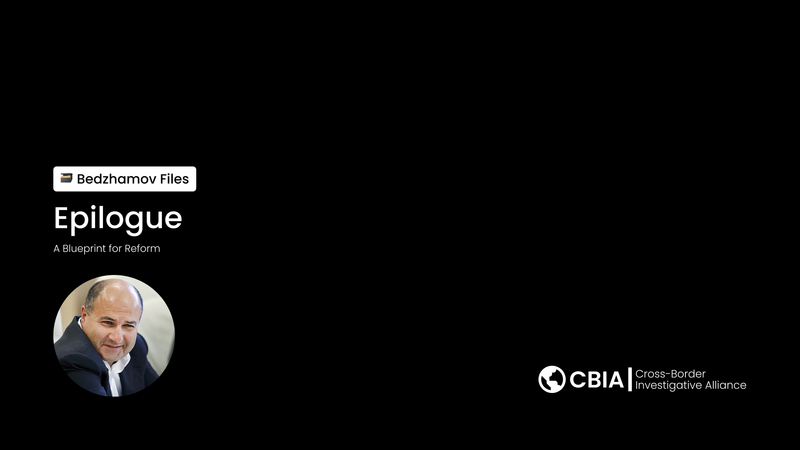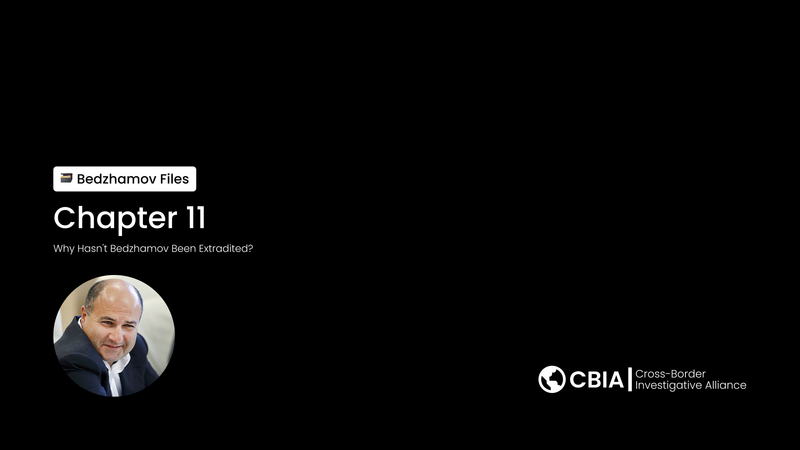Chapter 2: The Bank as a Family Business

By 2009, when Georgy Bedzhamov and Larisa Markus took control of Vneshprombank, Russia's banking system was undergoing significant transformation. Following the 2008 global financial crisis, authorities had begun consolidating the sector, reducing the number of banks operating in the country. This environment created both challenges and opportunities for the siblings as they positioned their institution as a haven for elite depositors.
Vneshprombank's rise to prominence wasn't accidental. Court documents reveal a deliberate strategy to cultivate relationships with powerful clients. Under the siblings' leadership, the bank specialized in serving what one financial analyst described as "a very particular clientele—the type that values discretion above all else." This included government-affiliated entities, state-owned corporations, and high-ranking officials who needed banking services that wouldn't attract scrutiny.
The division of labor between the siblings proved remarkably effective. Bedzhamov, leveraging his charisma and connections, focused on client acquisition and maintaining relationships with influential figures. He cultivated an image as a respectable businessman, even becoming president of the Russian Federation of Bobsleigh and Skeleton in 2010—a position that enhanced his public profile and connections to the sports establishment.
Meanwhile, Markus managed the operational side of the bank with an iron grip. Former employees later described to investigators a hierarchical system where she maintained personal control over significant transactions. According to court documents, she "personally approved all major loans and conducted negotiations with key clients." This hands-on approach, while ostensibly demonstrating diligent management, actually facilitated the fraud by ensuring that questionable transactions received necessary approvals.
By 2013, Vneshprombank had become one of Russia's 50 largest banks, with reported assets of approximately $2.5 billion. Its client list included the Russian Orthodox Church, major state corporations like Rosneft and Transneft, and even entities affiliated with the Ministry of Defense. This prestigious client roster served a dual purpose: it provided the bank with substantial deposits to exploit and offered a veneer of legitimacy that helped shield its operations from regulatory scrutiny.
The bank's governance structure was deliberately designed to concentrate power in the hands of the siblings and their closest associates. According to court filings, key management positions were filled with loyal personnel who either actively participated in the fraud or turned a blind eye to questionable practices. One former compliance officer, speaking anonymously to investigators, noted that "raising concerns about suspicious transactions was discouraged" and that "there was an unwritten rule that certain clients' activities were not to be questioned."
The siblings' influence extended beyond the bank's walls. They cultivated relationships with regulatory officials through what one court document described as "an elaborate system of gifts, favors, and other considerations." These connections helped ensure that regulatory inspections remained superficial, focusing on technical compliance rather than substantive oversight of the bank's lending practices.
A key aspect of their strategy involved creating an impression of financial stability and conservative banking practices. Vneshprombank presented itself as a prudent institution, avoiding the flashy excesses that characterized some Russian banks during this period. This calculated restraint helped maintain the trust of depositors who believed they were placing their funds in a secure environment.
However, behind this facade of respectability, a very different reality was taking shape. Court records indicate that from at least 2009, the siblings had begun implementing a scheme to systematically divert funds from the bank. The mechanism was sophisticated but fundamentally simple: they extended large loans to shell companies they controlled, with no intention that these funds would ever be repaid.
These loans were disguised through elaborate documentation that gave them the appearance of legitimate transactions. According to prosecutors, the scheme involved "falsified financial statements, fabricated collateral agreements, and counterfeit corporate resolutions" designed to withstand cursory regulatory review. The sophistication of this documentation suggests the involvement of professional enablers—lawyers, accountants, and other specialists who helped construct this facade of legitimacy.
As the fraud progressed, maintaining appearances became increasingly important. The siblings ensured that interest payments on the fraudulent loans were made on schedule, creating the impression that these were performing assets. These payments, however, came from other diverted funds, effectively creating a classic Ponzi scheme structure within the bank's operations.
By 2014, the scale of the fraud had grown dramatically. Court documents suggest that by this point, approximately 40% of the bank's loan portfolio consisted of fictitious loans to entities controlled by the siblings and their associates. Despite this growing hole in the bank's balance sheet, Vneshprombank continued to attract deposits from prestigious clients, who remained unaware that their funds were being systematically misappropriated.
The siblings' personal lifestyles reflected their growing wealth. While careful to avoid ostentatious displays that might attract unwanted attention, they nevertheless enjoyed significant luxury. Bedzhamov acquired properties in London and Monaco, while Markus purchased high-end real estate in various European locations. These acquisitions were typically made through complex ownership structures involving offshore companies, trusts, and nominees—arrangements designed to obscure the true source of funds and beneficial ownership.
Their strategy might have continued indefinitely had economic conditions remained favorable. However, in 2014, Russia faced a perfect storm of economic challenges: Western sanctions following the annexation of Crimea, plummeting oil prices, and a general economic slowdown. These factors created liquidity pressures across the banking sector, ultimately leading to closer scrutiny of institutions like Vneshprombank.
As 2015 drew to a close, the carefully constructed facade began to crumble. Depositors, responding to broader economic uncertainty, increased withdrawal requests, creating liquidity pressures that the bank struggled to manage. This prompted closer attention from regulators, who finally began to uncover the massive fraud that had been hiding in plain sight for years.
The siblings' response to this growing crisis revealed the fundamentally predatory nature of their operation. Rather than attempting to shore up the bank's finances, they accelerated their looting, transferring as many assets as possible beyond the reach of future creditors. Court documents indicate that in the final months before the bank's collapse, hundreds of millions of dollars were moved offshore through an increasingly desperate series of transactions.
On December 18, 2015, the Central Bank of Russia placed Vneshprombank under temporary administration after identifying "signs of manipulation of financial statements." Just over a month later, on January 21, 2016, the bank's license was revoked. The siblings' golden goose had finally stopped laying eggs—but not before they had amassed a fortune at the expense of depositors and the Russian financial system.
The collapse of Vneshprombank revealed not just the extent of the siblings' fraud but also the systemic vulnerabilities that had allowed it to flourish. Their ability to operate for years without detection highlighted fundamental weaknesses in regulatory oversight, corporate governance, and the banking system's integrity. These failures would have profound implications not just for the immediate victims of the fraud but for confidence in Russia's financial institutions more broadly.
As investigators began to unravel the complex web of transactions that had enabled the fraud, the true scale of the siblings' operation became clear. They had not merely exploited weaknesses in the system—they had effectively weaponized the bank's prestigious client list, its regulatory connections, and its carefully cultivated image to create one of the most significant banking frauds in post-Soviet Russia. The bank had truly been a family business, but one dedicated to enrichment through deception rather than through legitimate financial services.
Sources:
[1] Markus v. Rozhkov, U.S. Court of Appeals
[2] Vneshprombank v Bedzhamov, Kireeva v Bedzhamov [2024] EWHC 1048 (Ch)
[3] "Useful guidance on 'reasonable cause' - Vneshprombank v Bedzhamov", Legal Analysis
[4] "The Vneshprombank Scandal", OCCRP Report
[5] "The Rise Of The Russian Oligarchs", Historical Analysis of Post-Soviet Economic Transition





